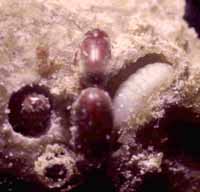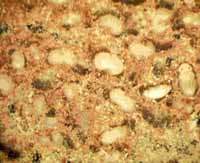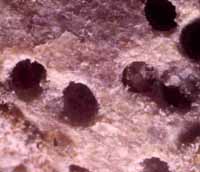- Yokohama-shi Top Page
- Health, Medical and Welfare
- Health and Medical Care
- institute for health
- Living Environment Hygiene Information
- Information on pests
- Is it okay to manage food? (Part 2 Beetle)
Here's the text.
Is it okay to manage food? (Part 2 Beetle)
Last Updated April 1, 2023

Larvae and adult worms
- Why don't you see a small brown sesame-sized insect walking on the kitchen shelf and by the window of the living room?
- Are there any insects in the dried foods that I kept in a safe place?
- Is there a small hole in the preserved buckwheat, somen bunch or chocolate?
One of the most common beetles at home is the beetle.
Shibanmushi is a typical food pest.
It is only the time of the larvae that harms food.
The larvae grow in food. That's why I can't see it. However, in the process of growth, fine waste is discharged to the surface, which is a landmark. Be careful if you can see scraps around the food.
The mature larvae are about 2-3 mm long, stag beetle-shaped and milky white. The larvae become a pupa in the food. Adults returned from the pupa come out with a hole in the food. Therefore, there are countless holes in foods with many adults.
Adults are about 2.5mm and are brown. The movement is active, walking on food and flying toward the light.

Larvae and pupae

Escape hole
The most common beetles found at home are tobacco beetle and jinsanshi beetle.
There is a lot of food that can be harmed by omnivorous shibangs.
For example, stored grains (rice, wheat, etc.), powders (flum, hot cake ingredients, etc.), confectionery (biscuits, chocolate, cookies, etc.), spices, medicinal herbs, nuts, buckwheat, shiitake mushrooms, dried fruits, etc.
[Storage is in a container with a packing! ]
Even unopened food is not enough by packaging alone. If there is a small gap, it will be spawned. Store in a container that can be tightly sealed.
[If you think it is doubtful]
More than 60 species of Shibanmushi have been recorded in Japan.
In addition to harming food, books are known to beetle, tatami mats are known to beetle, and building materials include pine beetle.
It is very difficult to identify each species. If you are in doubt, bring an insect to a nearby Health and Welfare Center and consult.
(Explanation of the viper in the text)
Tobacco Cibanmushi Lasioderma serricorne
Adults are 1.7-3.1mm long. It is reddish brown, elliptical and covered with yellowish fur. The antennae is like a saw.
The larvae are stag beetle-shaped and mature larvae are 3-5 mm long. The body color is milky white. It mainly winters with larvae.
Damage processed foods of cereals, grain flour, dried fruits, confectionery, spices, flora and fauna specimens, etc. It is also an important pest of tobacco.
In Japan, it is widely distributed south of Honshu.
Zinsanshibanmushi Stegobium paniceum
Adults are 1.7-3.5mm long. It is reddish brown or brown and covered with yellow fine hairs. The antennae is particularly thick and long at the tip of the three sections.
The larvae are stag beetle, and the mature larvae are about 3.5 mm long. The body color is milky white.
It mainly winters with larvae.
Graces, grains, dried fruits, and confectioneries. It is famous as a pest of dried Korean ginseng.
In Japan, it is widely distributed south of Honshu.
Inquiries to this page
Microbial Inspection and Research Division, Medical Care Bureau Institute of Health
Telephone: 045-370-9379
Telephone: 045-370-9379
Fax: 045-370-8462
Email address: ir-eiken@city.yokohama.jp
Page ID: 930-262-374







